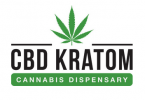December 14, 2016
DÉJÀ VU? IS THE DEA UNLAWFULLY ATTEMPTING TO OUTLAW ALL CANNABINOIDS…AGAIN?
I. INTRODUCTION
The Drug Enforcement Administration (DEA) has, yet again, demonstrated its lawless recalcitrance for the prevailing law. A new Rule published in the Federal Register, and currently set to become effective on January 13, 2017, seeks to control all naturally occurring cannabinoids from the Cannabis sativa L plant. The DEA attempted something very similar in 2003, and the Ninth Circuit Court of Appeals rejected its efforts as unlawful and beyond the scope of the DEA’s delegated Congressional authorization. But, here we go again.
Within the framework of existing laws, a robust cannabis industry, including consumer, textile and manufacturing industries based around non-psychoactive varieties of the Cannabis sativa L. plant and derivatives and cannabinoids derived therefrom, has evolved from the efforts of thousands of companies across the United States and globally. These industries, which already exist in the European Union, Latin America, Canada and China, among other countries, are rapidly growing, creating vast economic opportunities along with job creation. Absent a reversal or the striking of the DEA’s Rule, these businesses and industries stand to suffer a devastating impact from this Rule. To protect these individuals, businesses and this industry, the DEA’s actions cannot be overlooked.
More specifically, on Tuesday, December 14, the Federal Register published information concerning a Final Rule enacted by the DEA pertaining to a change to 21 CFR 1308. In sum, the DEA has created a new Administration Controlled Substances Code Number for “Marihuana Extract.” According to the Federal Register, “[t]his code number will allow DEA and DEA- registered entities to track quantities of this material separately from quantities of marihuana” in order to comply with “relevant treaty provisions.” There are a number of unusual things about this DEA action; not the least of which is that it appears to be, yet again, outside of the scope of the DEA’s power and authority as it pertains to the legality and regulation of the Cannabis sativa L plant.
The fact that the DEA, an unelected government body with no legislative authority, is attempting to outlaw all cannabinoids is concerning and problematic as it pertains to portions of the plant not legally defined as “marihuana,” and as it pertains to lawfully cultivated and processed Farm Bill-compliant industrial hemp. The discussion below addresses many of the salient reasons why the DEA’s most recent action cannot stand, and outlines an action plan accordingly.
1
II. DISCUSSION
A. The DEA/Federal Register Issue
The DEA’s new definition for “Marihuana Extract” includes: “an extract containing one or more cannabinoids that has been derived from any plant of the genus Cannabis, other than the separated resin (whether crude or purified) obtained from the plant.” The primary problem with this new definition is that it purports to broadly outlaw all 80-plus cannabinoids [such as cannabidiol (CBD), cannabinol (CBN), cannabigerol (CBG), etc.] contained within this genus. And cannabinoids are not unlawful controlled substances. The only cannabinoid that has been specifically identified in the Controlled Substances Act (CSA) is tetrahydrocannabinol (THC), as set forth below.
Per the Federal Register, the DEA previously established separate code numbers for marijuana and for tetrahydrocannabinols (THC), but not for “Marihuana Extract.” This is true, and directly related to the DEA’s Congressionally-delegated authority under the Controlled Substances Act (CSA) because “marihuana” (marijuana) and “tetrahydrocannabinols” (THC) are both listed on Schedule I. 21 U.S.C. §812(c)(Schedule I)(c)(10), (17)).
B. CSAINCLUSIONOFTHC
But even the CSA definition of THC, as an individually identified cannabinoid, does not appear to prohibit inclusion of THC in these extracts, as the Ninth Circuit determined when it stated that the definition of “THC” under the CSA includes only synthetic THC. 21 C.F.R. § 1308.11(d)(27). THC is defined there as “[s]ynthetic equivalents of the substances contained in the plant, or in the resinous extractives of Cannabis, sp. and/or synthetic substances, derivatives, and their isomers….” The lawful definition of THC expressly excludes THC that is naturally occurring in the stalks and fibers of a lawfully imported industrial hemp plant. And the controlled substances listing of THC is different from the listings for DMT, mescaline, psilocybin, and psilocyn, the definitions for which are not limited to synthetic forms of the drugs. See 21 C.F.R. § 1308.11(d).
In Hemp Indus. Ass’n. v. DEA, supra, the court held that the DEA could regulate products containing natural THC if it is contained within marijuana, and can regulate synthetic THC of any kind. But they cannot regulate naturally-occurring THC not contained within or derived from marijuana, i.e., non-psychoactive hemp products, because non-psychoactive hemp from the stalks and fibers of such a plant is not included in Schedule I. The Court concluded that the “DEA has no authority to regulate drugs that are not schedule….” Id. at 1018.
Furthermore, the Court concluded, “[I]f naturally-occurring THC were covered under THC, there would be no need to have a separate category for marijuana, which obviously contains naturally- occurring THC. Yet Congress maintained marijuana as a separate category.” Hemp Indus. Ass’n.
2
v. DEA, 357 F.3d 1012, 1014 (9th Cir. 2004) (quoting Hemp Indus. Ass’n v. DEA, 333 F.3d 1082, 1089 (9th Cir. 2003).
In summary, under the CSA, the DEA can regulate foodstuffs and related products containing natural THC if it is contained within “marijuana,” and can regulate synthetic THC of any kind. But they cannot regulate naturally-occurring THC not contained within or derived from marijuana–i.e., non-psychoactive industrial hemp products–because non-psychoactive industrial hemp is not included in Schedule I, as set forth above. This is because statutes must be interpreted strictly and pursuant to their specific terms, and because the DEA has no authority to regulate drugs that are not scheduled.
C. FEDERAL DEFINITION OF “MARIHUANA”
It is clear that marijuana, or “marihuana,” is a controlled substance. But not all parts of the Cannabis sativa L plant are considered “marihuana” under the federal definition. Moreover, when it comes to industrial hemp, as set forth in the Agriculture Act of 2014 (commonly known as the Farm Bill), the entire industrial hemp plant is lawful, as set forth more fully below.
To be clear, the federal definition of marihuana expressly excludes various portions of this plant. Yet, the DEA fails to recognize this express caveat. Under the CSA, “marihuana” is defined, not by the DEA, but by Congress, as follows:
[A]ll parts of the plant Cannabis sativa L., whether growing or not; the seeds thereof; the resin extracted from any part of such plant; and every compound, manufacture, salt, derivative, mixture, or preparation of such plant, its seeds or resin. Such term does not include the mature stalks of such plant, fiber produced from such stalks, oil or cake made from the seeds of such plant, any other compound, manufacture, salt, derivative, mixture, or preparation of such mature stalks (except the resin extracted therefrom), fiber, oil, or cake, or the sterilized seed of such plant which is incapable of germination.21 U.S.C. § 802(16)(emphasis added).
By definition, the listing of “marihuana” in Schedule I excludes the mature stalks of such plant, fiber produced from such stalks, oil or cake made from the seeds of such plant, any other compound, manufacture, salt, derivative, mixture, or preparation of such mature stalks (except the resin extracted therefrom), fiber, oil, or cake, or the sterilized seed of such plant which is incapable of germination. Hemp Indus. Ass’n., 357 F.3d at 1014 (quoting 21 U.S.C. § 802(16)). Thus, any extracts derived from the foregoing portions of a Cannabis sativa L plant lawfully cultivated outside of the United States remain lawful.
3
D. FARM BILL’S EXPRESS AUTHORIZATION OF INDUSTRIAL HEMP, INCLUDING CANNABINOIDS DERIVED THEREFROM
The Farm Bill renders the entire industrial plant, including extracts, as lawful. On February 7, 2014, President Obama signed the Agricultural Act of 2014 into law. See P.L. 113-79 (§7606). Section 7606 of the act, Legitimacy of Industrial Hemp Research, defines industrial hemp as distinct from marijuana and authorizes institutions of higher education or state departments of agriculture in states that legalized hemp cultivation to conduct research and pilot programs across the country. Id.
Importantly, the Farm Bill specifies that the entire “industrial hemp” plant is made lawful, in spite of, or notwithstanding, the CSA. As such, it expressly carves out an exception to the CSA for the entire industrial hemp plant and products/extracts therefrom. Id. Specifically, it states that “[n]otwithstanding the Controlled Substances Act (21 U.S.C. 801 et seq.), the Safe and Drug- Free Schools and Communities Act (20 U.S.C. 7101 et seq.), chapter 81 of title 41, United States Code, or any other Federal law, an institution of higher education (as defined in section 101 of the Higher Education Act of 1965 (20 U.S.C. 1001)) or a State department of agriculture may grow or cultivate industrial hemp (with certain regulatory limitations).” Id. And industrial hemp has been defined, accordingly, as an exclusion/exception to the CSA, as, “the plant Cannabis sativa L. and any part of such plant, whether growing or not, with a delta-9 tetrahydrocannabinol concentration of not more than 0.3 percent on a dry weight basis.” Id. There it is expressly clear that all parts of said plant, within this definition, are lawful, including but not limited to the extracts therefrom.
E. CANNABINOIDS ARE NOT ILLEGAL CONTROLLED SUBSTANCES
Cannabinoids are not illegal if they are derived from certain parts of the plant, and the Farm Bill expressly indicates that the entire plant is lawful, as set forth above.
Moreover, naturally occurring cannabinoids are not unlawful substances per se. In Hemp Indus. Ass’n. v. DEA, 357 F.3d 1012 (9th Cir. 2004), the Ninth Circuit ruled that naturally occurring cannabinoids in industrial hemp foods, including oil, were never scheduled under the CSA; therefore, the DEA has no jurisdiction. This means that naturally occurring industrial hemp cannabinoids are federally legal in the view of the Ninth Circuit.
In this case, the Court concluded: “[a]s in the case of poppy seeds commonly consumed on bagels and expressly exempted from the CSA, that come from a non-drug variety of, but the same species as, the opium poppy…non-psychoactive hemp seed products do not contain any controlled substance as defined by the CSA…” 357 F.2d at 1017.
4
F. DEA CITATION OF INTERNATIONAL TREATIES
By citing reconciliation with international treaties as the premise for this Rule, the DEA appears to be seeking to invoke 21 CFR 1308.46, which, in theory, allows the DEA to bypass normal rulemaking procedures, effectively eliminating due process from the procedures set forth by Congress and through the Federal Register. This use of such procedure by the DEA is akin to emergency rulemaking and not only undermines the premise of due process afforded to adversely affected interested persons, but is essentially is an abuse of process and appears to be an attempt to circumvent Congressional restrictions upon the DEA’s authority.
G. HEMP INDUS. ASS’N v. DEA CASE PRECEDENT
Fundamentally, cannabinoids are not specifically or generally defined under the Federal Controlled Substances Act (the “CSA”). However, through its ruling, the DEA has improperly taken the position that all cannabinoids, even isolated and pure cannabinoids such as CBD, are unlawful under the CSA. Without an express provision under the CSA, it is questionable whether the DEA has any sort of authority to take this position. But more importantly, in the case of Hemp Indus. Ass’n v. DEA, 333 F.3d 1082 (9th Cir. 2003), the DEA attempted to initiate rules and interpretations concerning certain cannabinoid constituents of a Cannabis sativa L plant that were not expressly set forth under the CSA or the DEA’s own regulations (at the time), and the Ninth Circuit Federal Court of Appeals struck down its efforts, stating that: “[t]he petition requesting that we declare the rule to be invalid and unenforceable is GRANTED.” Hemp Indus. Ass’n v. DEA, 333 F.3d 1082 (9th Cir. 2003). In short, an agency – such as the DEA – is not permitted to change a legislative rule retroactively through the process of disingenuous interpretation of the rule to mean something other than its original meaning. Yet, here they go again, and, again this needs to be stopped.
H. CONGRESSIONAL BUDGETARY APPROPRIATIONS ACTS DE-FUNDING DEPARTMENT OF JUSTICE PURSUANT TO FARM BILL
To further confirm Congressional intent pursuant to the Farm Bill, Congress enacted the Consolidated and Further Continuing Appropriations Act of 2015 (Pub. L. 113-235, 128 Stat. 2130, §538 (2014)), and re-authorized such regulations in the Consolidated Appropriations Act, 2016, (Pub. L. No. 114-113, 129 Stat. 1175 (§763)), and most recently, this week extended the same through April 28, 2017 (collectively, the “Spending Bill”) (Pub. L. No. 114-254)
. The Spending Bill effectively precludes block federal law enforcement authorities from interfering with conduct authorized by the Farm Bill, such state agencies and hemp growers, as well as to counter efforts to obstruct agricultural research. Accordingly, the Spending Bill sets forth:
5
None of the funds made available by this Act or any other Act may be used—
(1) (2)
See Pub. L. No. 114-113, 129 Stat. 1175 (§763). The enforceable effect of the Spending Bill’s de-funding mechanisms have since been affirmed in multiple cases. See U.S. v. Marin Alliance for Medical Marijuana (MAMM), Case No. 98-00086; see also U.S. v. McIntosh, Case No. 15- 10122 (2016).
Therefore, the DEA’s final rule regarding “Marihuana Extract” not only contradicts its own rule- making authority, as otherwise discussed herein, but also explicitly conflicts with the Spending Bill provisions enacted by Congress, which disallows the DEA from expending resources that conflict with the Farm Bill.
I. DEA FINAL RULE DISTINCTION BETWEEN “CANNABIS RESIN” AND “MARIHUANA EXTRACT”
There is a positive aspect to this publication and the DEA’s position accordingly. Specifically, the new Rule defines “marihuana extracts” as distinct from its resins – “Marihuana Extract” is a new category and is “other than the separated resin (whether crude or purified) obtained from the plant.” It finds that the “use of the term ‘cannabinoid’ necessitates that the DEA clarify that the new marihuana extract category (drug code 7350) is not intended to include ‘cannabis resin’ as defined in the U.N. Single Convention (and under the CSA).” 21 CFR Part 1308, 81 FR 90194 This is an important distinction because it effectively acknowledges that cannabis extracts are not resins, but are something else altogether. This is a good sign because the CSA definition of marijuana makes any resins extracted from any part of the plant unlawful. 21 U.S.C. 802(16). And we have always known that resins are distinct from extracted oils; this Rule expressly makes that distinction and furthers the argument that the DEA has exceeded its jurisdiction here.
J. CANNABINOIDS ARE NOT EXCLUSIVELY NATURALLY OCCURRING IN CANNABIS PLANTS
The genus Cannabis sativa L. possesses over eighty distinct and naturally occurring cannabinoids. For example, research indicates cannabinoids also naturally occur in coneflower (Echinacea), oxeye (Heliopsis helianthoides), electric daisy (Acmella oleracea), Helichrysum umbraculigerum, liverwort (Radula marginata), black pepper (Piper nigrum) and even chocolate (Theobrama cacao) plants.
in contravention of section 7606 of the Agricultural Act of 2014 (7 U.S.C.
5940); or
to prohibit the transportation, processing, sale, or use of industrial hemp that is grown or cultivated in accordance with subsection section 7606 of the Agricultural Act of 2014, within or outside the State in which the industrial
hemp is grown or cultivated.
6
Importantly, the DEA has even admitted that cannabinoids naturally occur in other plants and/or can be derived from sources other than marijuana. See 21 CFR Chapter II, Docket No. DEA- 426, p. 53698 Further, the DEA also admits the tetrahydrocannabinol is the main psychoactive cannabinoid in marijuana – psychoactivity being the main impetus behind scheduling (synthetic) tetrahydrocannabinol – while also acknowledging that many of the other cannabinoids, specifically including CBD, do not possess psychoactive effects. See 21 CFR Chapter II, Docket No. DEA-426, p. 53698; Docket No. DEA-427 53778.
K. ACTION PLAN
There are administrative procedures, including requests for hearing, and/or the commencement of litigation seeking injunctive and declaratory relief that can be taken in response to the DEA’s Rule. Examples of such prior challenges include the HIA v. DEA case itself, along with recent challenges regarding the DEA’s ruling with regard to banning Kratom. Our team is diligently and expediently working to prepare a recommended strategy in response to the DEA’s Rule and looks forward to working on behalf of the continued success of the effected industries.
/s/ Robert T. Hoban, Esq.
Managing Partner, Hoban Law Group
/s/ C. Adam Foster, Esq.
Partner, Hoban Law Group
/s/ Garrett Graff, Esq.
Associate Attorney, Hoban Law Group, Hemp Attorney
/s/ Dennis Brovarone, Esq.
Senior Attorney, Hoban Law Group, Hemp Attorney
/s/ Patrick Goggin, Esq.
Counsel, Hoban Law Group, Hemp Attorney






